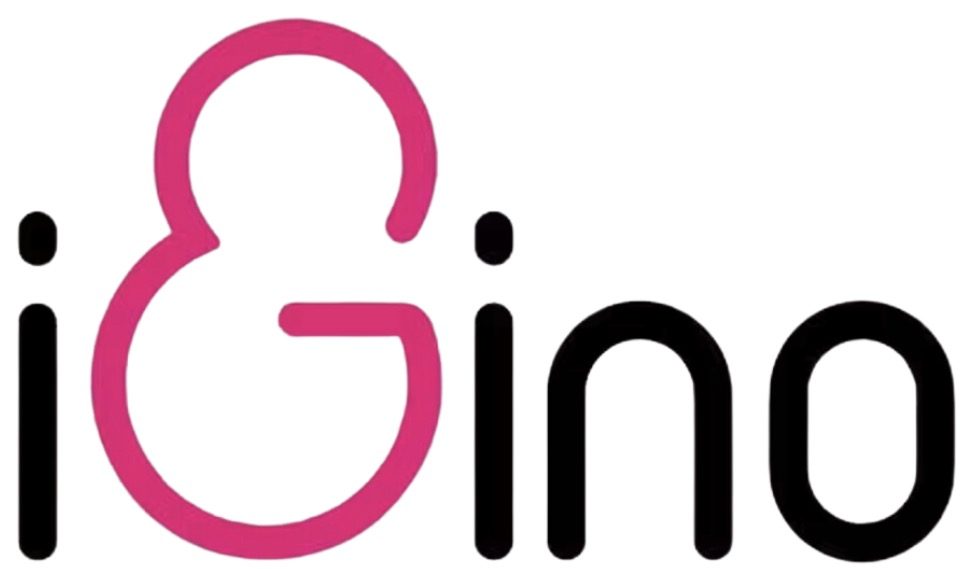Causes of Whole Body Shakes
To understand the reasons behind experiencing whole-body shakes, this section with the title “Causes of Whole Body Shakes” is here to help. The sub-sections, including Vibrator Usage, Sexual Arousal, and Medical Conditions, will give you a glimpse of the possible causes that might lead to this.
Vibrator Usage
The use of handheld mechanical devices with vibration functions can lead to involuntary shaking of the entire body. The oscillation stimuli caused by the device can overstimulate muscle fibers and cause them to contract uncontrollably, leading to whole-body vibrations or shakes. These devices are commonly used for medical purposes, such as pain relief and physical therapy.
The high-frequency vibrations produced by some vibrators may trigger reflexive responses in muscles or nerves, leading to full-body tremors. The severity and duration of these tremors depend on various factors, including the intensity of vibration, duration of use, proximity of stimulation to nerve endings, and individual sensitivity.
Moreover, excessive use of vibrators can cause damage to muscle tissue over time and lead to long-term tremors. Studies have reported cases where individuals who regularly used vibrators experienced hand-arm vibration syndrome, a condition characterized by tingling sensations and reduced grip strength in the hands.
It is essential for users to avoid excessive or prolonged use of vibrators and take breaks in between usage sessions. Additionally, using lower intensity levels and keeping the vibrator away from nerve-rich areas can help prevent involuntary shaking caused by vibrating stimulants.
In recent times, an increasing number of individuals have turned towards utilizing vibratory components in their everyday routine. While most people have employed this for medical reasons with great success it raises alarm when their misuse contributes adversely to bodily dysfunction.
As we continue to discover new means towards impacting our immediate environment positively through technological innovations that keep emerging daily – it is equally important that we remain aware of any negative effects they could pose on our bodies.
Feel the rhythm, feel the shake – but this article is about a different type of body quake.
Sexual Arousal
The physiological response to an individual’s stimulation is the reason behind Body Shakes. It occurs during various activities, one of which is sensory or emotional input that can trigger sexual arousal. Sexual arousal is a complex process that involves many factors such as feeling attraction, physical stimulation, and hormonal changes.
During sexual arousal, certain parts of the brain activate and send signals to the genital area, leading to an increase in blood flow, breathing rate, heart rate and other physiological symptoms like sweating.
However, there are other reasons besides sexual arousal that may also be responsible for body shakes. These include anxiety disorders, chronic pain conditions, alcohol withdrawal symptoms and side effects from medication.
To alleviate body shakes due to sexual arousal or other underlying causes like anxiety disorders or chronic pain conditions, individuals may benefit from practicing mindfulness techniques such as deep breathing exercises and meditation. Exercise can also be beneficial for reducing stress levels which contributes towards shaky body sensations. Consulting with a healthcare provider is essential if persistent symptoms affect daily activities.
Who needs carnival rides when you have medical conditions that give you whole body shakes?
Medical Conditions
Body Tremors Caused by Medical Conditions
Experiencing whole body tremors can be distressing, especially if they occur regularly. Various medical conditions can cause body shakes, including neurological disorders such as Parkinson’s disease, multiple sclerosis and epilepsy. These diseases disrupt the body’s ability to communicate with its muscles, causing involuntary movements which can include tremors.
Other medical conditions that may lead to whole body shakes include hypoglycaemia, anxiety and panic disorders. Hypoglycaemia occurs when blood sugar levels are too low while anxiety or panic disorders arise due to emotional stress or a traumatic event. In both cases, the body reacts by releasing adrenaline which in turn triggers muscle tremors.
It is important to consult a medical professional if you experience frequent whole body shakes. They will diagnose the underlying cause and suggest appropriate treatment options such as medication or therapy. In addition, lifestyle changes such as stress management techniques and adjustments to daily routines can help alleviate symptoms in some cases.
To reduce the frequency of tremors caused by hypoglycaemia, maintain regular mealtimes and eat foods with a low glycemic index such as fruits and vegetables. For individuals with anxiety or panic disorders, speaking to a therapist or practicing relaxation techniques like deep breathing and meditation may help manage symptoms. Overall, understanding the root cause of whole body shakes is crucial in establishing an effective treatment plan.
Whole body shakes may leave you feeling like a washing machine on a spin cycle, but at least you can skip the gym today.
Effects of Whole Body Shakes
To understand the effects of whole body shakes after using vibrator, dive into this section. You will explore two sub-sections: Physical Symptoms and Emotional Impact. These sub-sections briefly explain how these shakes impact your body and emotions.
Physical Symptoms
The impact of whole body shakes on the physical well-being of an individual can be significant. The occurrence of body tremors can exacerbate underlying medical conditions and cause temporary disruptions in daily activities. Tremors are commonly associated with Parkinson’s disease, multiple sclerosis, and essential tremor.
These shakes can present themselves as involuntary and rhythmic contractions or oscillations of skeletal muscles. Sufferers may experience a range of symptoms such as slurred speech, difficulty writing, muscle stiffness, and altered gait patterns. In some cases, excessive shakiness can lead to falls and fractures.
It is essential to note that not all tremors are pathological, nor do they have long-term implications. Certain triggers such as stress, anxiety or caffeine consumption can cause benign bodily tremors which subside after the stimulating factor is removed.
While some individuals may find comfort in medication that dulls tremor-related symptoms, others opt for physical therapy or counseling. These types of interventions help individuals improve their dexterity, balance, and overall sense of control over their bodies.
Historically speaking, whole-body vibrations have been used for centuries to augment physical healing processes. This treatment modality has shown promise in the recovery from injuries such as muscle strains or bone fractures by stimulating cellular growth and collagen deposition.
Whole body shakes: the only time it’s socially acceptable to look like you’re having a mental breakdown in public.
Emotional Impact
The physiological response to whole body shakes can exert a profound effect on one’s mental and emotional state. These movements stimulate the release of endorphins, dopamine and serotonin which lead to feelings of euphoria, joy and relaxation. This reaction is a result of the autonomic nervous system being activated and resetting itself, allowing heightened states of calmness and wellbeing.
Furthermore, this boost in mood can have positive implications on cognitive function, memory retention and decision making skills. It has been shown to decrease levels of stress hormones such as cortisol and reduce symptoms of anxiety and depression. The physical release through shaking allows individuals to process pent up emotions, facilitating growth and self-awareness.
Whole body shakes can also offer an opportunity for community building as it fosters a sense of collective participation in this shared experience. Sharing these experiences with others further enhances its positive impact on emotional regulation.
In alternative medicine practices such as Qigong, certain shaking exercises are known to be effective in releasing negative energy from the body. For instance, Master Li Junfeng’s Shaking Practice involves spontaneous vigorous movements that simulate qi circulation through the body leading to improved mood regulation.
Who needs a personal masseuse when you can just stand on top of a washing machine during the spin cycle?
Coping with Whole Body Shakes
To cope with whole body shakes caused by vibrator use, you can explore various solutions. In this section, we’ll discuss how to manage the issue with relaxation techniques, communication with your partner, or seeking medical help as appropriate. Get insights into these sub-sections to overcome the adverse effects of the whole body shakes after using a vibrator.
Relaxation Techniques
When it comes to mitigating the effects of whole body shakes, there are various ways that can help you calm your body down. Taking deep breaths and visualizing peaceful surroundings can be effective techniques to help you relax. Furthermore, muscle relaxation exercises such as progressive muscle relaxation and stretching can reduce tension in your body.
Practicing mindfulness meditation is also an effective way to manage and cope with whole body shakes. By focusing on your breathing and staying present in the moment, this technique can help reduce feelings of anxiety or stress. Additionally, aromatherapy using lavender or chamomile oils can have a calming effect on the mind and body.
To get started with these relaxation techniques for coping with whole body shakes, it’s best to find a quiet space where you won’t be disturbed. Begin by taking slow, deep breaths while exhaling slowly. Next, visualize yourself in a peaceful setting like the beach or mountains.
Incorporating these techniques into your daily routine can not only help alleviate shake symptoms but also promote overall mental health and well-being. Don’t let the fear of missing out on a calmer state keep you from trying out these techniques today.
Talking about my tremors with my partner is like trying to explain quantum physics to a labradoodle.
Communication with Partner
Communication with a Loved One during Whole Body Shakes
When experiencing whole body shakes, communication is key to ensure that your loved one understands what you are going through and can provide their support. Share your symptoms, how they make you feel, and what you need from them.
Openly listen to their responses and try to understand their point of view. It’s important to create a safe space where both partners feel comfortable expressing themselves.
In addition, limit distractions such as electronic devices or other activities as it may hinder communication.
Remember that supporting one another through difficult times can strengthen the bond between partners. Embrace this opportunity for deeper connection and understanding.
Don’t let fear of missing out on this intimate experience prevent you from communicating with your partner during whole body shakes. Reach out and share your feelings – it may bring you even closer together.
Better to seek medical help now than to shake off the mortal coil later.
Seeking Medical Help
When experiencing whole body shakes, it is important to seek prompt medical attention. Immediate care can provide necessary treatments and help prevent any further complications. Delaying medical assistance could lead to exacerbation of the underlying condition causing the shakes or potentially even life-threatening situations.
Medical professionals may begin by conducting a thorough evaluation to diagnose the cause of the full-body movements. From there, appropriate treatments can be prescribed for the underlying conditions such as medications, therapy, or surgery if needed. It is essential not to self-diagnose or self-treat as it could worsen symptoms or prolong recovery time.
If left untreated, whole body shakes may progress and increase in frequency, intensity, and duration. This progression can interfere with individual’s daily activities and even pose emotional stress and social isolation on the patient due to embarrassment caused by uncontrollable tremors.
Do not delay seeking medical assistance when experiencing full-body shakes as early intervention can prevent irreversible damage. Contact a trusted healthcare provider immediately if encountering these symptoms.
Frequently Asked Questions
Frequently Asked Questions:
1. Why does my whole body shake after using a vibrator?
Your body’s natural response to sexual stimulation can cause muscle contractions, including in the pelvic area. This can cause your whole body to shake or spasm.
2. Is it normal to experience shaking after using a vibrator?
Yes, it is completely normal to experience shaking or muscle contractions after using a vibrator. This is a sign that your body is responding well to the stimulation.
3. Can using a vibrator cause any harm to my body?
No, using a vibrator is generally safe and does not cause any harm to your body. However, it is important to follow the manufacturer’s instructions and use the product in a safe and responsible manner.
4. How can I reduce the shaking after using a vibrator?
Some people find that relaxation techniques, such as deep breathing or meditation, can help reduce shaking after using a vibrator. It is also important to make sure that you are properly hydrated and have eaten a meal before use.
5. Should I seek medical help if the shaking persists?
If the shaking persists or is accompanied by other abnormal symptoms, such as pain or discomfort, it is important to consult with a medical professional. They can help determine if there is an underlying medical issue causing the shaking.
6. Are there any other side effects from using vibrators?
Some people may experience temporary numbness or tingling in the genital area after using a vibrator. However, this typically goes away on its own within a few hours.


